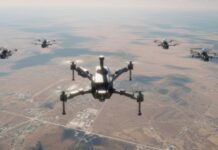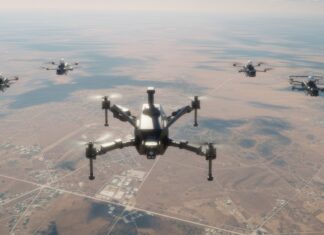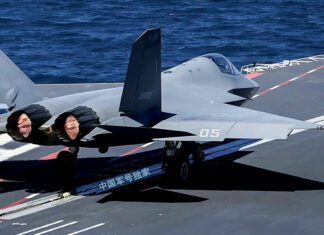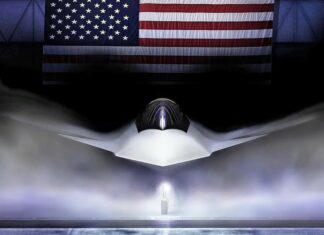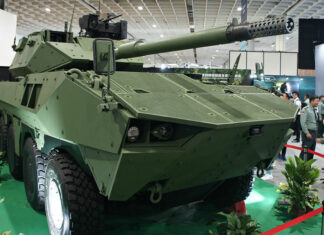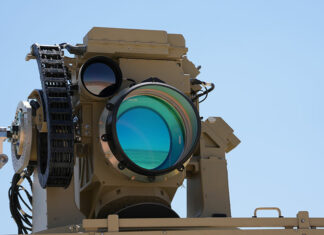Welcome to this week’s DefenseTech Brief from Defense-Update. This report brings you the latest developments in military technology, business, and investment opportunities, drawing on our recent articles and analysis. This week, we cover significant advancements across ground, air, and naval domains, highlighting new procurements, modernization efforts, and the increasing integration of autonomous systems. We also examine a recent geopolitical event that underscores the evolving nature of warfare and the critical role of advanced defense technologies.
Focus Shift? Autonomous Robotic Formations or Manned-Unmanned Teaming?
Following the cancellation of the Robotic Combat Vehicle (RCV) development, MQ-1C Grey Eagle UAS, and some of the AH-64D Apache squadrons, the US Army maintains its pursuit of manned-unmanned teaming (MUM-T), with initial Human Machine Integrated Formations (HMIF) planned for fielding in 2027. Development focuses on introducing common control systems for both ground and aerial robots, enabling more streamlined operability of humans and robots.
The Army’s HMIF concept envisions dismounted personnel and manned vehicles operating alongside robotic platforms serving as “wingmen” or systems capable of performing dangerous tasks, with machines making first contact with the enemy. The development includes modular, open architecture systems facilitating rapid technology integration. Control systems are being designed for integration into vehicles like the XM-30, current AMPV, and portable devices for infantry. The phased approach begins with teleoperation and progresses to greater autonomy based on field experiments and soldier feedback.
This approach represents a significant step towards modernizing ground combat, emphasizing phased autonomy and the reduction of risk to personnel. The focus on common control systems and modular architecture aims to create a flexible robotic ecosystem. Deferring larger platforms like the RCV indicates a desire to build experience with smaller systems before committing to more complex ones.
 European Armored Modernization Efforts Underway
European Armored Modernization Efforts Underway
While the US Army discontinues large-scale productions of armored vehicles, European armies and armored vehicle manufacturers are scaling up manufacturing. CV-90, Boxer, Ajax/Ascod 2, and CAVS are only a few examples of the growing demand that spans all European countries, not only the largest military forces.
Greece is modernizing its mechanized forces by upgrading Leonidas AIFVs and M-113 armored personnel carriers. Israel’s Rafael and Elbit Systems have submitted competing proposals for M-113 modernization with engine upgrades, enhanced armor, and weapon systems. France has proposed selling surplus VBCI vehicles and producing new Philoctetes MK II VBCIs locally. Romania plans to purchase 246 tracked infantry fighting vehicles with bids from multiple manufacturers, emphasizing localized production and technology transfer.
Greek modernization brings legacy platforms to modern standards with comprehensive upgrades. Israeli proposals upgrade M-113s to A3 standard with improved automotive systems, armor, and weapons including 30mm turrets and SPIKE LR2 missiles. The French VBCI Philoctetes offer includes interim vehicles and local production with 40mm cannons. For Leonidas upgrades, EODH and Valhalla propose remote weapon stations and enhanced protection. Romania’s acquisition is driven by the need to strengthen NATO’s eastern flank, prioritizing industrial participation and technology transfer.
These programs demonstrate a trend toward enhancing the capabilities and survivability of armored forces in Europe. Greece’s approach balances cost and capability needs, while the emphasis on local industry participation in both countries reflects common European procurement requirements. Romania’s large-scale purchase signals significant investment in its land forces.
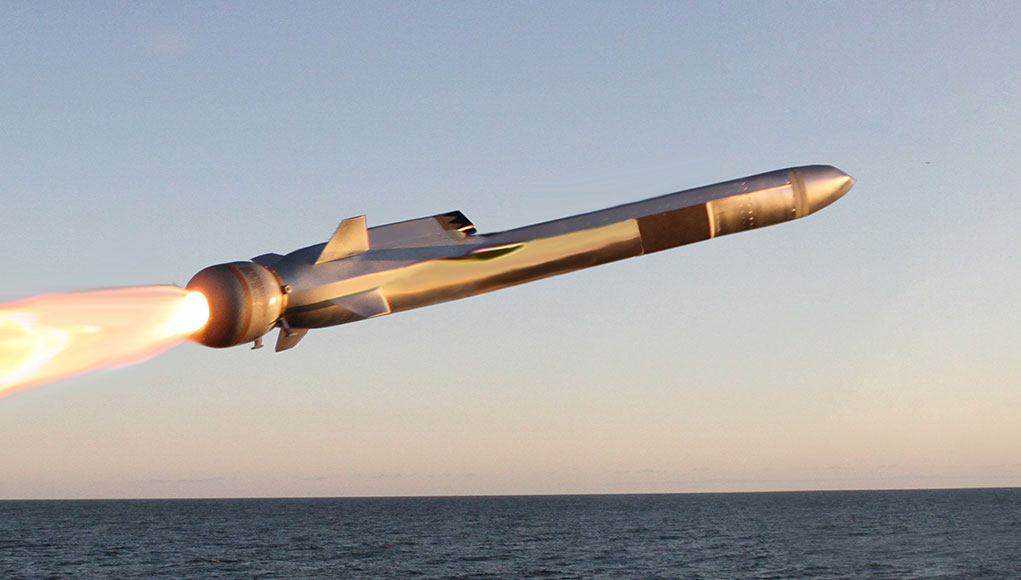
Denmark Bolsters Coastal Defense with Naval Strike Missiles
Denmark is strengthening its naval capabilities by acquiring Kongsberg’s Naval Strike Missile (NSM), considering reactivation of coastal defense batteries, and boosting the anti-ship capabilities of its Iver Huitfeldt-class frigates. This acquisition replaces older Harpoon missiles and supports Denmark’s plan to expand its naval capacity.
The NSM acquisition represents a significant upgrade for the Royal Danish Navy, providing advanced anti-ship capabilities. Reactivating coastal defense batteries with NSMs indicates a focus on area denial and maritime approach control. Utilizing the same missile system on both coastal batteries and frigates provides operational flexibility while supporting Denmark’s naval expansion plans.
Denmark’s decision underscores a clear intention to strengthen anti-ship capabilities and maritime area control, consistent with the broader European trend of investing in modern coastal defense systems. Platform integration across land and sea offers strategic advantages.
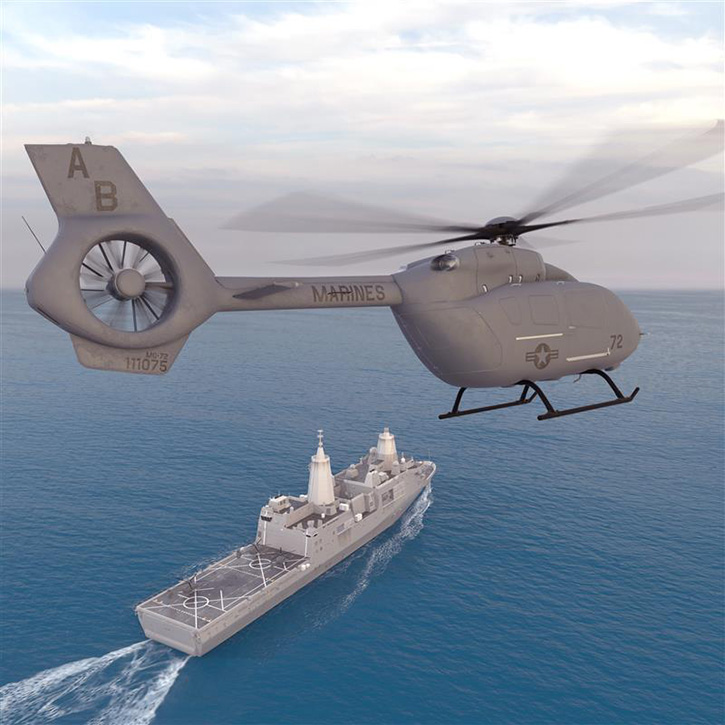
Advancements in Autonomous Aerial Logistics
Airbus U.S. and Shield AI are integrating Hivemind autonomy software into the UH-72 Lakota helicopter, creating the MQ-72C Logistics Connector capable of autonomous operations without GPS, communications, or human input. This supports the Marine Corps’ Aerial Logistics Connector program. Concurrently, Airbus pursues various European autonomy projects, including the VSR700 tactical UAS and advanced cockpit automation research.
The MQ-72C initiative aims to provide resilient supply lines for distributed operations in challenging environments. Hivemind enables autonomous flight without reliance on GPS or communications, addressing electronic warfare vulnerabilities. This transforms a conventional helicopter into an autonomous aircraft. Airbus’s European projects include the VSR700 for naval missions and Clean Sky 2 research for civil aircraft cockpit automation. European autonomy programs like the Next Generation Rotorcraft Technologies (ENGRT) project focus more on foundational technologies for systems beyond 2030.
The MQ-72C represents a rapid application of advanced autonomy for contested logistics, contrasting with Airbus’s broader European projects spanning civil and military domains. The U.S.-Shield AI collaboration leverages commercial expertise and rapid prototyping, with GPS-independent operation providing significant advantages in modern warfare scenarios.
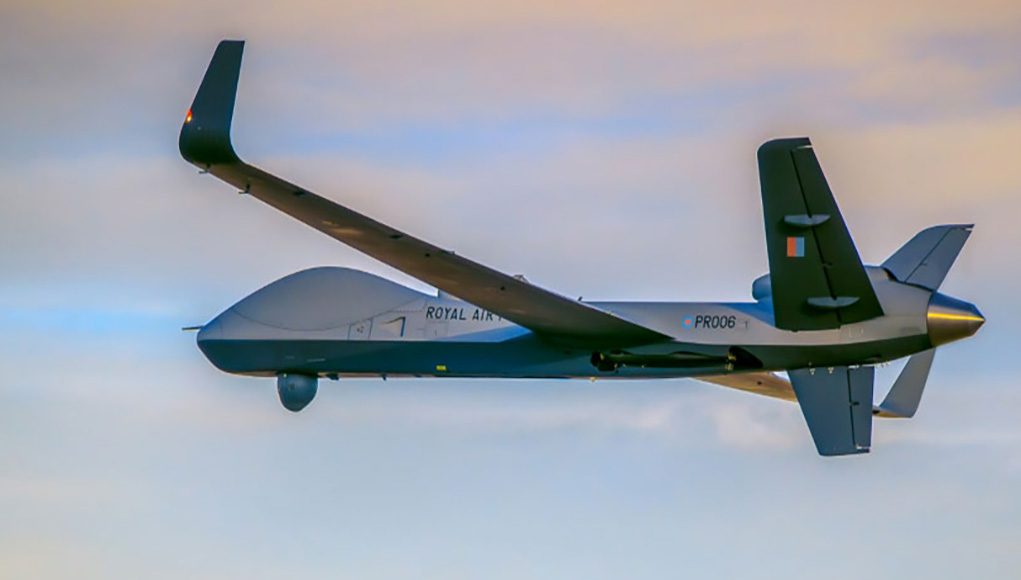
Progress in RPAS Airspace Integration
The UK’s Protector RG Mk1 (MQ-9B) has received certification to operate without geographic restrictions, including flying over populated areas. The German Heron TP has completed cross-border and upper-airspace flights, while the Swiss Hermes 900 Starliner has received dual military and civilian certification. European regulatory bodies are working to enable the full integration of large RPAS into general air traffic.
The Protector certification marks a landmark achievement, allowing a large RPAS to operate in the same airspace as manned aircraft. The German Heron TP’s test flights refine procedures for RPAS integration, though it doesn’t yet have unrestricted flight rights across Europe. The Hermes 900’s dual certification allows civilian airspace operation. EDA and EASA efforts aim to eliminate special mitigation measures for large RPAS.
These developments show that regulatory and technical hurdles to integrating military RPAS into civilian airspace are being systematically addressed. The NATO STANAG 4671 standard serves as a key benchmark. Successful integration is crucial for routine deployment without requiring segregated airspace, though complete integration remains an ongoing effort.
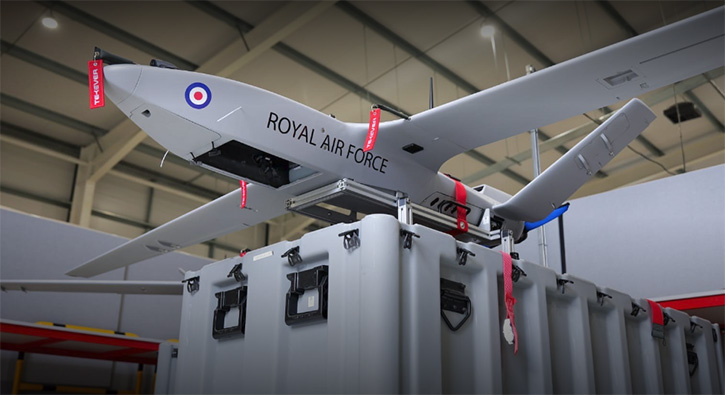
UK’s StormShroud Drone Enhances Electronic Warfare Capability
The UK has introduced the StormShroud unmanned aerial decoy for Suppression of Enemy Air Defences (SEAD), based on the Tekever AR3 UAS with Leonardo’s BriteStorm electronic warfare payload. The system is ground-launched and parachute-recovered, with Tekever announcing significant UK defense investment.
StormShroud provides the RAF with SEAD capability using a proven UAS platform. The ground-launched, parachute-recovered system favors endurance and simple deployment by small teams. Leonardo’s BriteStorm payload offers stand-in jamming and deception capabilities designed for small UAVs and attritable platforms. Importantly, BriteStorm is platform-agnostic and capable of integration into various systems. Tekever’s investment strengthens the UK-Portugal defense technology partnership.
StormShroud with BriteStorm gives the RAF specialized electronic warfare and SEAD capabilities. The platform-agnostic payload increases utility across various uncrewed systems. The focus on an attritable platform accepts potential system loss during high-risk missions, an important capability in contested environments where air defense systems pose significant threats.
US Marine Corps Embraces Loitering Munitions with OPF-L Program
The US Marine Corps’ Organic Precision Fires-Light (OPF-L) program aims to equip infantry battalions with loitering munitions, including AeroVironment’s Switchblade 300 and a reusable VTOL munition from Teledyne FLIR. The program began in September 2023, with the first systems for evaluation scheduled in early 2026. OPF-L supports the USMC’s Force Design 2030 initiative.
OPF-L increases small-unit lethality and reduces reliance on external fire support. The battle-proven Switchblade 300 provides precision-guided strike capability at battalion level, while reusable systems offer mission flexibility. The program is explicitly linked to Force Design 2030, reflecting the Marine Corps’ shift toward distributed operations and incorporating lessons from recent conflicts. This initiative includes force structure changes, training, and new military occupational specialties.
OPF-L represents a major doctrinal and technological shift for USMC infantry, providing organic precision strikes at lower echelons supporting dispersed, self-reliant units. Multiple vendors and system types create a complementary capability mix, with rapid fielding timelines underscoring urgency.
Replicator 2: Scaling Autonomous Systems and Counter-Drone Tech
The Replicator initiative aims to rapidly acquire thousands of attritable autonomous systems. Replicator 1 focused on multi-domain autonomous systems, while Replicator 2.0 targets Counter-small UAS (C-sUAS) with low collateral damage capabilities. The initiative uses the Defense Innovation Unit’s Commercial Solutions Opening process to involve non-traditional companies. Systems include loitering munitions, uncrewed vehicles, electronic warfare systems, and AI-enabled detection technologies.
Replicator 1 counters China’s military buildup with mass quantities of low-cost autonomous systems. Replicator 2 addresses the growing threat of small drones, minimizing risks in complex environments. The CSO acquisition process bypasses traditional procurement bottlenecks. Replicator encompasses a portfolio including Switchblade 600 loitering munitions, AI for data processing, swarms management, and open system architectures. Allied participation demonstrates willingness to leverage international R&D.
Replicator represents a transformative DoD effort prioritizing speed, scale, and autonomy. The pivot to C-sUAS highlights the critical drone threat and need for scalable countermeasures. Non-traditional acquisition methods and broader industry engagement reflect fundamental shifts in defense procurement strategy.
India-Pakistan Conflict (May 2025): A Case Study in Modern Warfare
The week of May 5th-11th, 2025, saw rapid escalation to multi-domain conflict between India and Pakistan, including aerial combat, missile strikes, drone warfare, artillery duels, and cyber activities. India launched “Operation Sindoor” while Pakistan responded with “Operation Bunyan al-Marsus.” A US-mediated ceasefire faced immediate violations. Pakistan claimed cyberattacks against Indian domains, satellites, and government servers, while India released images of an allegedly Pakistani Turkish-made loitering munition.
This brief conflict demonstrated the operational integration of modern military technologies. Both sides employed missile strikes from standoff range, with India reportedly targeting terrorist infrastructures and military sites using cruise missiles, drones, and guided aerial weapons inside Pakistani areas. Pakistan claimed interception of five Indian fighter planes inside Indian territory, using Beyond Visual Range (BVR) air/air missiles, particularly Chinese PL-15 air/air missiles used in combat for the first time.
The conflict demonstrated the effectiveness of India’s multi-layered Air Defense network. These air defenses were employed primarily against Pakistani attacks by ballistic missiles, rockets, and drones. At the same time, across the border, Pakistan’s combat air defense relied on a massive deployment of fighter aircraft to repel the Indian attacks. However, this massive counter-air campaign failed to defeat the air-launched and ground-launched cruise missile attacks launched by the Indian side, allegedly at terror infrastructure and, later, early warning and air-base targets.
Drone warfare was prolific, with India and Pakistan claiming to have shot down dozens of Pakistani drones without providing clear evidence of such numbers. Pakistan’s claimed offensive cyber operations introduced non-kinetic attacks targeting critical infrastructure, causing disruption and outages in power services in Northern India. The rapid escalation highlighted volatility between these nuclear-armed states.
This conflict illustrates that modern conflicts are likely to be multi-domain, involving conventional, unmanned, missile, and cyber capabilities. The extensive use of drones validates the urgent focus on C-sUAS technologies. Claimed cyberattacks demonstrate the expanding attack surface in contemporary warfare, while rapid escalation underscores the importance of crisis management mechanisms and advanced defense capabilities.

